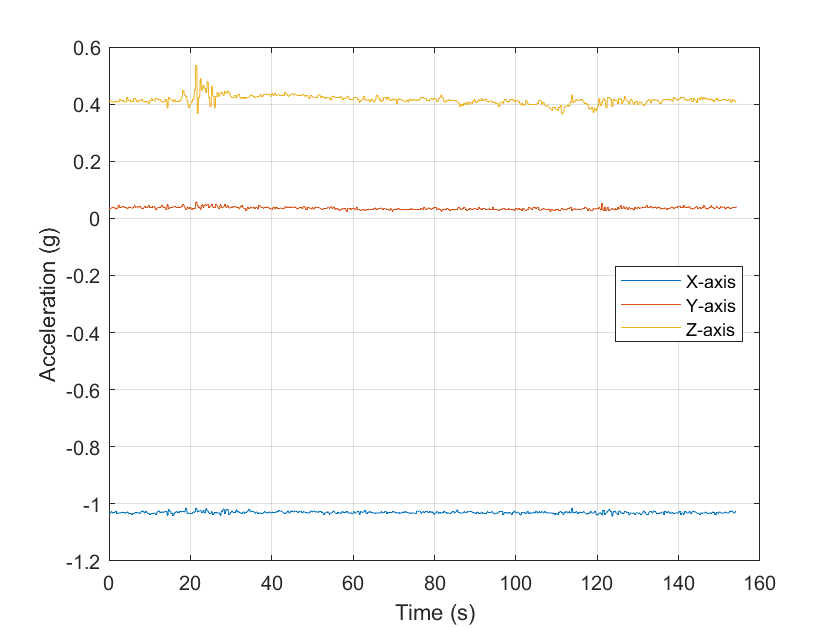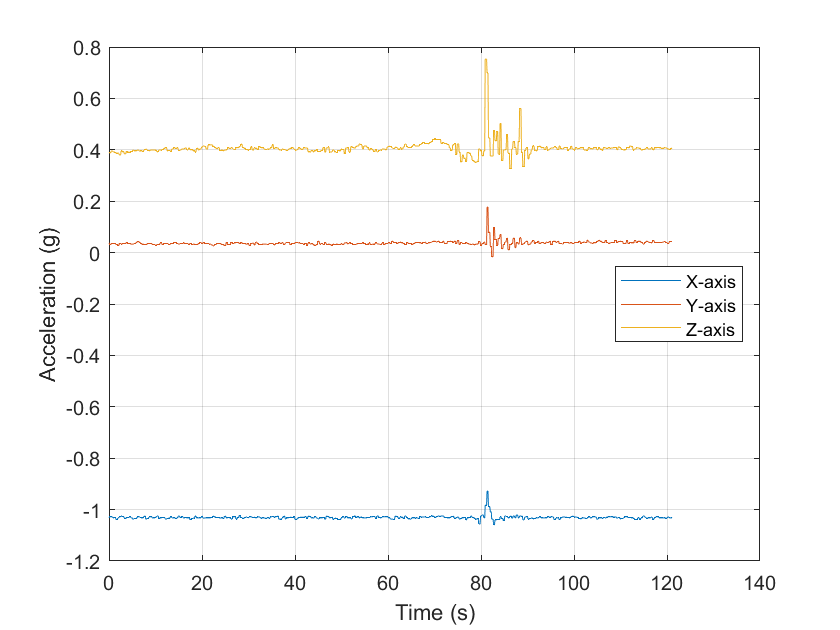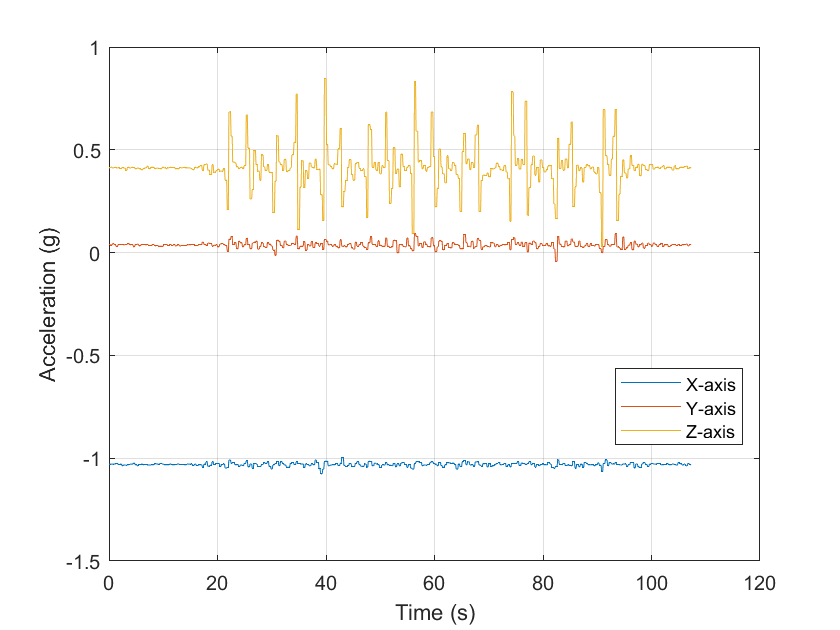SLYA073 December 2022 CC1312R , DRV5032 , TMAG5273
3.2 Accelerometer Event Testing Results
A third set of tests are also done to show the different event signatures associated with the onboard accelerometer. This can be leveraged in conjunction with a Hall-effect switch or Hall-effect sensor like the TMAG5273 for increased event detection modes and indication of brute force entry attempts on a particular door or window.
Figure 3-12 shows the accelerometer output of the X, Y, and Z axes for a door opening event. From the data, observe that the X direction is positioned vertically and the disturbance is captured on the Z axis.
 Figure 3-12 Accelerometer Door Open
Event
Figure 3-12 Accelerometer Door Open
EventDoing the same test for a closed door event, observe that there is more movement sensed as well as event indication which is now also shown on the X and Y axes, see Figure 3-13. This is due to the sharp deceleration once the door is fully closed.
 Figure 3-13 Accelerometer Door Close
Event
Figure 3-13 Accelerometer Door Close
EventFinally, the sensor is tested for the ability to detect brute force attempted entry. Figure 3-14 shows the event signature of attempting to open a closed door forcefully. As shown, there is a much larger disturbance detected on the Z axis (pointing outward parallel to the door) than in the previous test due to the larger vibration associated with the entry attempt. There are also minor movements picked up by the X and Y axes, but the Z axis data is sufficient in detecting a forceful entry attempt, in this case.
 Figure 3-14 Accelerometer Brute Force
Entry Attempt
Figure 3-14 Accelerometer Brute Force
Entry Attempt